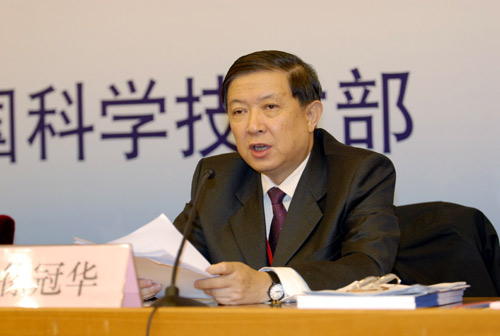

The national conference on the work of science-related foreign affairs began on November 30, 2006 in Beijing. State Councilor CHEN Zhili sent the congratulation letter, speaking highly of the achievements in this arena. She also encouraged all the people who engaged in the international science cooperation to keep the high spirit and serve China’s socialist modernization and national diplomacy, to accelerate the strategic shifts in guiding principle, working mechanism and major tasks and underpin the development of an innovative China.
The conference was held in the first year of implementing the National Medium and Long-Term S&T Development Plan and the S&T Development Plan in the 11th Five-Year Period (2006-2010). In line with the spirits of the Sixth Plenary Session of the 16th CPC Central Committee, the National Science and Technology Conference and the meeting of CPC Central Committee on foreign affairs, the conference reviewed the international S&T cooperation since 2001 and analyzed the new situation and requirements. It identified the guiding principles and overall missions and made a full-fledged arrangement for the major tasks of the international science cooperation in the 11th Five-Year Period.
Minister XU Guanhua said that five things were learned from past experiences, namely:
a. Centering on the national goal, we explored multiple channels to use the international science resources to serve social development and economic growth.
b. In close collaboration with the overall targets of the national diplomacy, we have taken full advantages of science diplomacy to promote economic and trade cooperation and friendship with other countries.
c. We have shared the latest accomplishment in science and technology because we adapted to the economic and scientific globalization, invented new patterns of international cooperation, and participated in the organization and implementation of the international mega projects.
d. We believe that the collaboration in human resources is an integral part of the whole picture. Therefore, we have kept on expanding channels to attract overseas talents and help the domestic ones to go abroad.
e. Thanks to careful planning and macro-level coordination, we were able to develop a multi-layer, multi-facet structure of international cooperation, giving a full play of the initiative of the locality, ministries and other government agencies, research institutes, universities and the businesses.
The Conference have made arrangement in six aspects regarding the priorities of the future cooperation:
a. implementing a batch of key International S&T Cooperative Projects in line with the overall target and priorities identified in the National Medium and Long Term S&T Development Plan so as to underpin national innovation capability;
b. strengthening bilateral, multi-lateral and regional cooperation;
c. attracting world-class talents to realize sustainable development of science cooperation;
d. promoting cooperation in basic research and frontier technologies, participating in or organizing international mega science programs to share the research findings;
e. working with the diplomatic, economic and trade sectors, encouraging research institutes and business to go global and expanding potentials for science and economic development;
f. in line with major decisions made on national economy, science and diplomacy, developing a research system for the strategy and policies of international science cooperation.
In the 11th Five-Year Period, MOST and other ministries will improve the coordination mechanism between local governments and departments which work for international science cooperation, build a platform for international cooperation, share information, pool the science resources both at home and abroad to have more efficient work.

